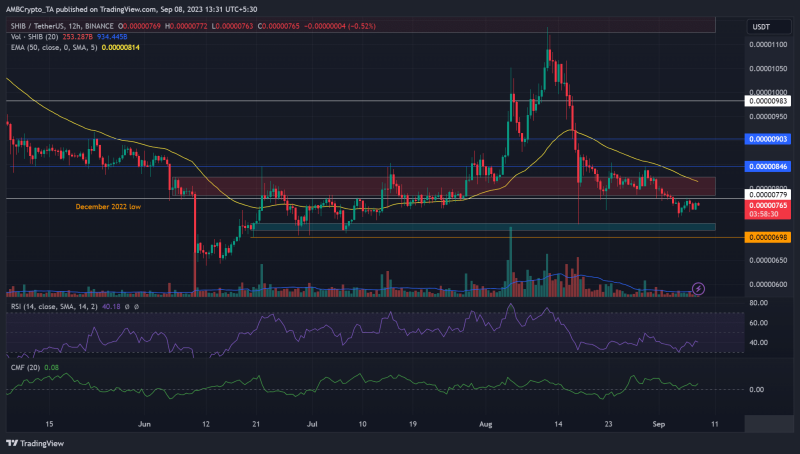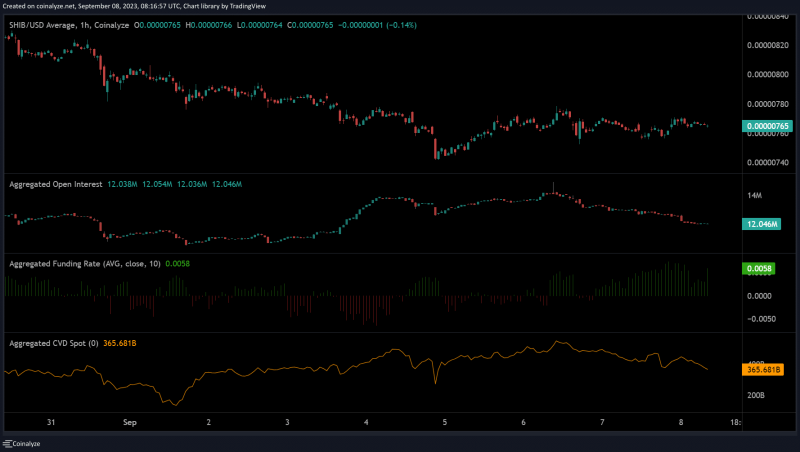SHIB drops below December 2022 lows, giving sellers more leverage to push it lower. Can bulls stop a further plunge?



Disclaimer: The information presented does not constitute financial, investment, trading, or other types of advice and is solely the writer’s opinion.
- SHIB cleared Q3 gains after easing close to July/August lows.
- Demand in the derivatives market dipped as sellers gained market control.
The meme coin hype seen in July is far from resurfacing amidst a tight, bearish grip in August and September. In particular, Shiba Inu’s [SHIB] over 75% rally between mid-June and mid-August has been wiped out.
SHIB traded at $0.00000765 at press time, below the December 2022 low of $0.00000779.
What’s next for SHIB’s price action?

SHIB formed lower highs on the 12-hour chart, a bearish market structure bias. The bias could only be invalidated and flipped bullish if price action reclaimed the May range-low of $0.00000846.
In the meantime, the flipping of the support zone of $0.00000785 – $0.00000824 (red) to resistance further reinforced sellers’ leverage. As such, sellers could drop SHIB to the H12 bullish order block of $0.00000713 – $0.00000727 (cyan) or $0.00000698.
Conversely, bulls could see a glimmer of hope if SHIB reclaims the May range-low of $0.00000846. The RSI has been below the 50 neutral levels since mid-August, underscoring the bearish pressure over the same period.
Interestingly, the CMF crossed the zero level in late August and hasn’t cracked it. It shows that SHIB recorded impressive capital inflows despite the bearish pressure.
Demand in the derivatives market dipped

According to Coinalyze, the Open Interest rates improved between 3-6 September but eased afterward. It shows that demand for SHIB dropped in the last two days, reinforcing a bearish bias.
Similarly, the CVD (Cumulative Volume Delta) retreated southwards from 6 September, underscoring sellers’ market control.
However, the funding rates flashed green at press time but have fluctuated since 1 September. Hence, tracking Bitcoin’s [BTC] movement is crucial for risk mitigation.

